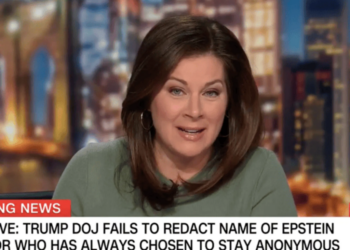After veering wildly this year over how to bring an end to the war in Ukraine, President Trump appeared in recent weeks to have settled into a strategy of suggesting he was willing to put long-term pressure on Russia’s president, Vladimir V. Putin.
He imposed new sanctions on oil sales, though not as strong as many in Congress would have liked. He agreed to provide arms to Ukraine’s forces as long as they were purchased by the Europeans, bringing billions of dollars to American defense contractors. At one point, he even floated the notion that he would provide Ukraine with Tomahawk missiles, only to back away from offering the long-range weapons after a conversation with Mr. Putin appeared to convince him it could escalate into a direct American conflict with Russia.
Then he blew the whole thing up — yet again.
Many of the 28 points in the proposed Russia-Ukraine peace plan offered by the White House read like they had been drafted in the Kremlin. They reflect almost all Mr. Putin’s maximalist demands: Ukraine would have to cede to Russia all of the lands that Moscow has declared for itself in Donetsk and Luhansk. The United States would recognize that as Russian territory. No NATO forces could be based inside Ukraine that might prevent the Russians from regrouping and taking the whole country. The Ukrainian military would be limited to 600,000 troops, a 25 percent cut from current levels, and it would be barred from possessing long-range weapons that could reach into Russia.
In return, all sanctions on Russia would be lifted, and the country would be “reintegrated into the global economy,” — Mr. Putin’s most critical objective at a time when Russia is reeling from the long-term costs of a war he thought would be over in a week or two.
To add to the pressure, Mr. Trump set a short deadline, Thursday, Thanksgiving Day in the United States, for Ukraine to decide whether to give up not only part of its territory, but also its ability to defend itself with a fully staffed military and an arsenal of long-range weapons.
It is unclear what would happen if President Volodymyr Zelensky of Ukraine were to refuse to surrender both his territory and Ukraine’s freedom to defend itself and form alliances with other nations, especially in Europe. But the implicit threat is a loss of military support — and critical intelligence — from the United States, especially if Mr. Trump decides to wash his hands of the conflict, no matter what the risk to European allies.
“Thursday is, we think, an appropriate time,” Mr. Trump told Brian Kilmeade of Fox News Radio on Friday. He at one point noted that he had extended deadlines when “things are working well,” a reminder of the many previous deadlines Mr. Trump set, and ignored, in this conflict.
Two U.S. officials said on Friday that the Trump administration strongly implied to Ukraine that Washington expected it to agree to the deal. One of them noted that Mr. Zelensky’s chief national security adviser, Rustem Umerov, had received a copy of the plan more than a week ago during a secret trip to Miami. Some changes he suggested were incorporated in a recent draft. The officials spoke on the condition of anonymity to describe private discussions.
“He’ll have to like it and if he doesn’t like it then, you know, they should just keep fighting,” Mr. Trump said on Friday afternoon when asked by reporters about Mr. Zelensky’s response to his peace deal.
Asked if the United States would pull back its support for Ukraine if its president did not accept the deal, Mr. Trump said, “At some point, he’s going to have to accept something.”
Mr. Zelensky, who is gradually losing ground on the battlefield and weakened at home by a corruption scandal engulfing his government, said the choice before him was grim.
“Now is one of the most difficult moments in our history,” he told Ukrainians in a video address. “Now Ukraine may find itself facing a very difficult choice. Either the loss of dignity, or the risk of losing a key partner.”
The Ukrainian president has struggled to forge an alliance with Mr. Trump since their fraught Oval Office meeting in February.
When he shouted at Mr. Zelensky, “You don’t have the cards!” Mr. Trump revealed his singular focus on the power dynamics. The weaker party, he has made clear, would have to give way. And while he veered from that position occasionally — even musing earlier this fall that Ukraine could win back its Russian occupied territory — he has always gravitated back to Mr. Putin’s side of the conflict.
“The Ukraine plan clearly violates Ukraine’s sovereignty and its territorial integrity,” said Douglas Lute, a retired Army general who served many years in Europe and then worked on the national security councils of Presidents George W. Bush and Barack Obama. “The common theme for this White House is that there are vague, unenforceable terms, offered without coordination from all parties involved.”
That is clear from the details of the draft peace proposal that leaked this week, after Mr. Trump’s Army secretary finally shared it with the Ukrainians themselves.
White House officials initially insisted that the document — drafted with no input from the Ukrainians, the European allies or the Congress — is a starting point, and still malleable. There is talk of inserting some kind of security guarantee that would include an American promise to defend Ukraine against further incursions. But from all descriptions, the commitment appears to be vaguely worded. And the suggested peace terms would ban Ukraine from joining NATO, the Atlantic alliance.
And the offer to use the proposed deal as a starting point runs headlong into Mr. Trump’s looming deadline — essentially giving Mr. Zelensky six days to decide on the details of a plan with sweeping implications for his country.
Under the U.S. proposal, the alliance would be forbidden from keeping forces in Ukrainian territory. If Russia were to invade again, the accord calls for a “coordinated military response” and the reimposition of sanctions — essentially the situation that prevails today, one that has failed to change Russia’s behavior. There is no discussion of protecting Ukraine from cyberattack, sabotage or attacks on its communications, all of which are common events.
“Ukraine will hold elections within 100 days,” the accord requires. There is, naturally, no such requirement for the other party to the agreement, Mr. Putin’s Russia.
Republican congressional backers of Ukraine were withering in their assessments.
“The so-called peace plan has real problems,” Senator Roger Wicker of Mississippi, chairman of the Senate Armed Services Committee, said in a statement late Friday. “Ukraine should not be forced to give up its lands to one of the world’s most flagrant war criminals.” He went on to detail a series of reservations, concluding that “any suggestion that we can pursue arms control with a serial liar and killer like Putin should be treated with great skepticism.”
Senator Mitch McConnell of Kentucky warned that “Putin has spent the entire year trying to play President Trump for a fool.”
“Rewarding Russian butchery would be disastrous to America’s interests,” he added in a statement.
Initially, the White House seemed to distance itself from the plan. Secretary of State Marco Rubio, who is also national security adviser, said many ideas were being kicked around, all subject to change.
But on Thursday, the White House press secretary, Karoline Leavitt, said that Mr. Rubio and Steve Witkoff, the president’s special envoy, had “quietly” been drafting the plan and that Mr. Trump had endorsed its general direction. The president has since leaned into it, and White House officials have pointed to details about an American-led reconstruction of Ukraine that would give the country a chance to move beyond the war, much as the Marshall Plan did for Europe after World War II.
“The president supports this plan,” Ms. Leavitt told reporters. “It is a good plan for both Russia and Ukraine and we believe that it should be acceptable to both sides and we are working very hard to get it done.”
Ms. Leavitt’s wording was telling, because all of Europe — not just Ukraine and Russia — has a deep interest in the outcome. While Mr. Trump often talks about a cease-fire or peace agreement in purely territorial terms, focusing on “land swaps” and other real estate details, the Europeans think of it in terms of containment of Mr. Putin.
Should the deal go through, under terms close to those now being discussed, Mr. Putin will emerged with recognized control of Crimea and parts of Ukraine. European fighters, the plan states explicitly, could be based in Poland, a move the Kremlin will most likely dislike. But there will be a reduced buffer between Mr. Putin’s forces and the NATO nations, because of the reduced size and capability of Ukraine’s military.
“It’s easy to forget that Europeans are now invested in the largest military in Europe — Ukraine’s,” said Meghan O’Sullivan, a Harvard professor who served in the Bush administration. “They are the most battle tested, the more technologically adept. And this proposal jeopardizes all that.”
Zolan Kanno-Youngs contributed reporting.
David E. Sanger covers the Trump administration and a range of national security issues. He has been a Times journalist for more than four decades and has written four books on foreign policy and national security challenges.
The post Trump Offers a Ukraine Peace Plan the Kremlin Can Love appeared first on New York Times.




